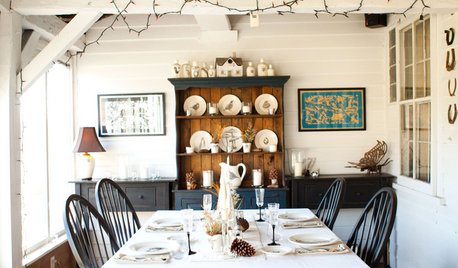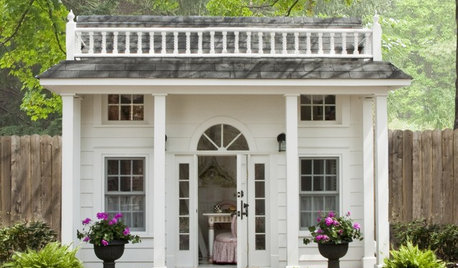What make it heirloom
forest_er
19 years ago
Related Stories

HOUZZ TOURSMy Houzz: Heirlooms and Antiques Befit a 1778 Vermont Home
Family treasures fit right in with original details in a spacious pre–Civil War home renovated with respect for its history
Full Story
SMALL HOMESMy Houzz: Heirlooms and Family Art Fill a 1920s Bungalow
Personal touches trump a huge design budget for a Florida couple with a taste for Americana
Full Story
DECORATING GUIDESVintage Modern: Featuring Heirlooms and Found Items
Can't Get Rid of It? Here's How to Create a Warm Mix of Old and New
Full Story
HOUZZ TOURSMy Houzz: Color and Heirlooms Combine in a Welcoming Bungalow
Inherited furniture mixes with bright hues in a 1921 Dallas home that embraces the neighborhood and modern life
Full Story
HOUZZ TOURSMy Houzz: In Brooklyn, Family Heirlooms and a Global Perspective
Family keepsakes, African art and black walls add character to a couple’s New York apartment
Full Story
KIDS’ SPACESHow to Make an Enchanting Kids' Play Kitchen
To delight your little one this holiday season, give an adorable wood oven and sink you build with love
Full Story
LIFEHouzz Call: What Makes Your House Feel Like Home?
Sometimes just one thing gives you that warm and fuzzy feeling. Let us know what it is for you
Full Story
DECORATING GUIDESMake a Scene With Vignettes and Tablescapes
Draw attention to objects on a table or shelf by arranging them in a vignette. These guidelines will get you started
Full Story
OUTBUILDINGSBirdie's Nest: Storybook Style Makes for a Marvelous Playhouse
Enter an adorable mini home with just enough room for tea parties, play cooking and snuggly story times
Full Story
MOST POPULARKitchen of the Week: Broken China Makes a Splash in This Kitchen
When life handed this homeowner a smashed plate, her designer delivered a one-of-a-kind wall covering to fit the cheerful new room
Full Story






gardenlad
mistercross
carolyn137
gardenlad